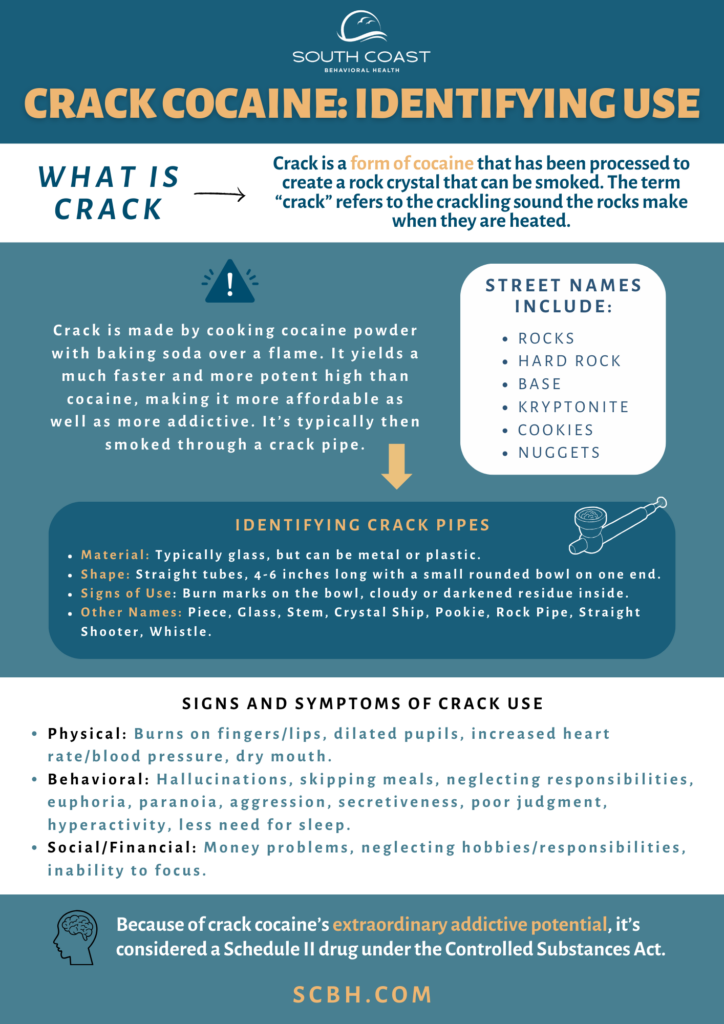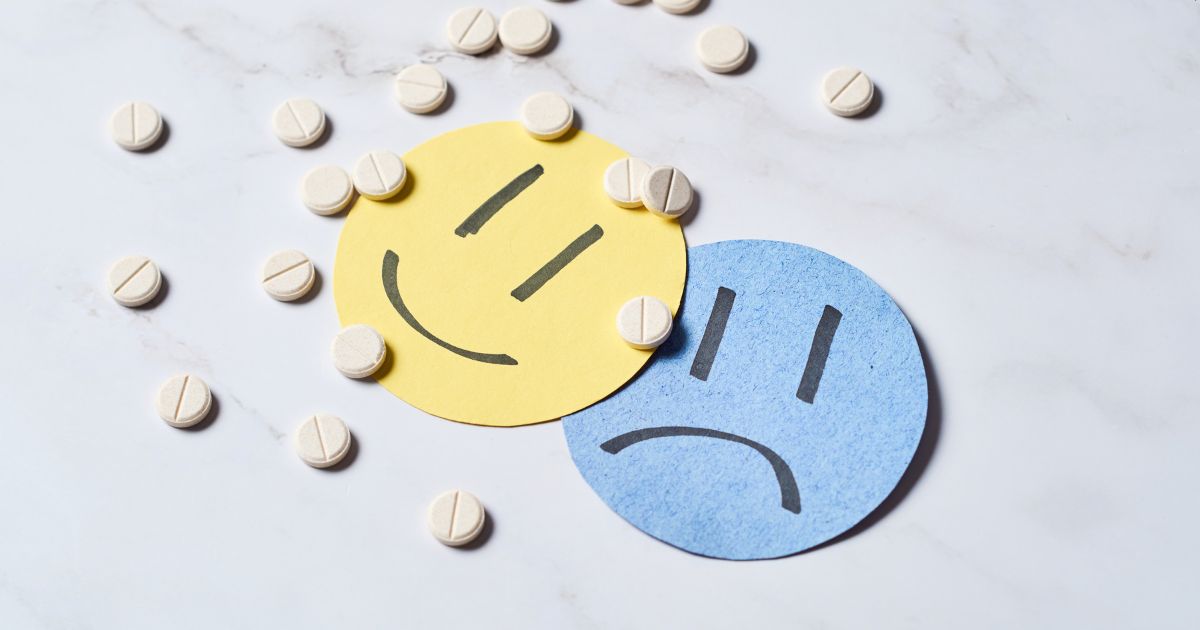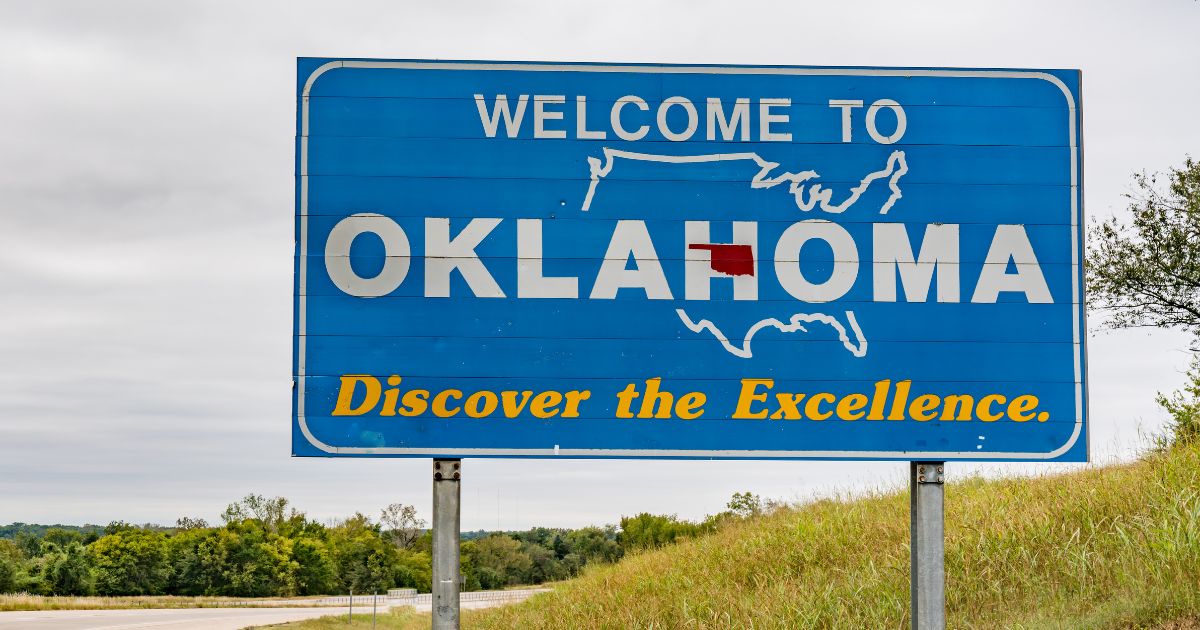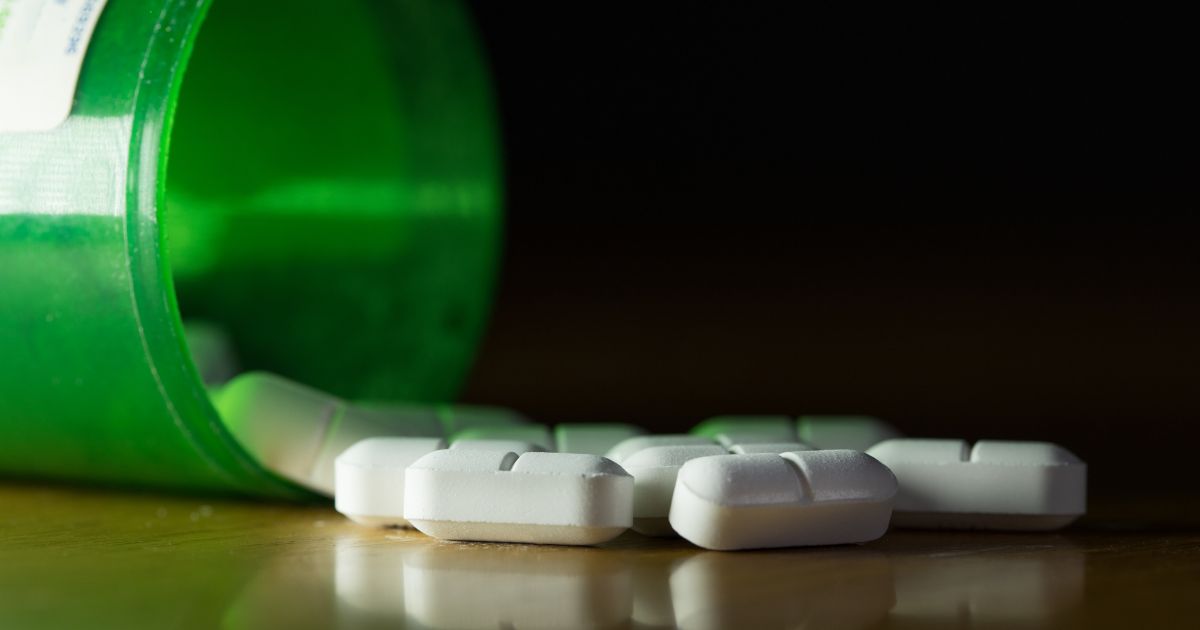Crack cocaine is one of the most harmful drugs there is. It’s extremely addictive and can destroy a person’s mind and body. The harm doesn’t stop at the individual, but extends to their friends and family as they have to deal with the consequences.
One of the main ways to identify if someone has a crack cocaine addiction is if they have a crack pipe. This article tells you what crack pipes are used for, what these pipes for crack look like, signs of crack addiction, and how to get treatment for crack addiction.
What is Crack?
Crack is a form of cocaine that has been processed to create a rock crystal that can be smoked. The term “crack” refers to the crackling sound the rocks make when they are heated.
Crack is made by cooking cocaine powder with baking soda over a flame. It yields a much faster and more potent high than cocaine, making it more affordable as well as more addictive. It’s typically then smoked through a crack pipe.
Some nicknames for crack include:
- Rocks
- Hard rock
- Base
- Kryptonite
- Cookies
- Nuggets
Because of crack cocaine’s extraordinary addictive potential, it’s considered a Schedule II drug under the Controlled Substances Act.
What Are Crack Pipes? How Does a Crack Pipe Work?
A key sign of cocaine addiction, crack pipes are specialized smoking devices designed for the consumption of crack cocaine, a highly addictive form of cocaine that has been processed into a crystalline rock form. These pipes are typically made of glass and feature a small bulb or bowl at one end where the crack is placed and heated. When heated, the crack vaporizes, allowing the user to inhale the drug’s fumes through the pipe. The design is often simple but functional, optimized to withstand high temperatures and deliver the vapor efficiently.
Because crack pipes are used for smoking a potent stimulant, they are often associated with serious health risks, including respiratory problems, burns, and the spread of infectious diseases when shared. Their use is illegal in many places, and possession of crack pipes can lead to legal consequences. Despite this, they remain a common tool among people who use crack cocaine due to their effectiveness in delivering the drug rapidly into the bloodstream through the lungs.
Types of Crack Pipes
Crack pipes come in a few common varieties, each designed to facilitate the smoking of crack cocaine efficiently. The most traditional type is the glass tube pipe, usually made from heat-resistant borosilicate glass. It features a small bulb or rounded end where the crack rocks are placed and heated until they vaporize. This type is popular because it’s inexpensive, disposable, and easy to use.
Another type of crack pipe is the metal pipe, often made from aluminum or steel. These pipes sometimes include a small screen or mesh at the bowl end to hold the crack pieces and prevent them from falling through. While more durable than glass, metal pipes can become very hot during use, often ending with the user burning his or her lips (a tell-tale sign of crack pipe use).
Some users also modify or repurpose items like light bulbs or small glass tubes as makeshift crack pipes, especially when traditional pipes are unavailable.
Get confidential help from our addiction treatment specialists in Orange County. Call to join our rehab program today!
Call 866-881-1184
What Do Crack Pipes Look Like?
Knowing what a crack pipe looks like can be vital for those worried about a loved one’s potential drug use.
Pipes used to smoke crack are typically made of glass, but can also be metal or plastic. They’re generally straight tubes, about four to six inches long. On one end will be a small rounded bowl, where crack is placed. On the other will be the mouthpiece, from where the user inhales the smoke.
A used crack pipe might have burn marks on or around the bowl. The inside of the pipe can appear cloudy or darkened from the residue.
Other names for a crack pipe may include:
- Piece
- Glass
- Stem
- Crystal ship
- Pookie
- Rock pipe
- Straight shooter
- Whistle
Be sure to keep a lookout for other paraphernalia associated with crack smoking. Things like steel wool or brillo pads can be repurposed as makeshift screens for pipes. Paper clips can be used to push crack into the pipe. And, of course, plastic baggies and lighters may be indicative of a crack cocaine pipe use.
Are Crack Pipes Legal?
Like meth pipes, crack cocaine pipes are considered drug paraphernalia. That is something designed and intended primarily for the consumption of illegal drugs. Pipes for smoking are considered paraphernalia. Drug users possessing a crack pipe is illegal, even in the absence of drug residue or any evidence you were smoking crack.
What Are the Signs and Symptoms of Smoking Crack?
Aside from possession of a crack pipe, here are some commonly observed signs and symptoms associated with smoking crack:
- Hallucinations
- Skipping meals
- Neglecting hobbies, responsibilities, or personal hygiene.
- Euphoria
- Increased rate of breathing
- Inability to focus on tasks or conversations.
- Paranoia
- Aggression
- Increased heart rate and blood pressure
- Secretiveness
- Dry mouth
- Burns on fingers or lips (from holding the hot pipe)
- Anxiety
- Poor judgment
- Hyperactivity
- Dilated pupils
- Decreased need for sleep
- Money issues
If you suspect a close friend or family member of smoking crack or using crack pipes or other drug paraphanelia, approach the situation with empathy and understanding. Let them know compassionate treatment centers are available.
Looking for quality substance abuse treatment that’s also affordable? South Coast accepts most major insurance providers. Get a free insurance benefits check now.
Check Your CoverageCrack Addiction Treatment at South Coast Behavioral Health
If you or a loved one are using crack pipes, South Coast Behavioral Health is here to help. Our levels of care and behavioral therapy treatment programs can help. The first step in treating a crack cocaine addiction is a medical detox. This means using drugs to manage withdrawal symptoms.
Our medical detox program in California is staffed by caring and compassionate professionals who can provide you with medications to manage your withdrawal symptoms. This may include things like anti-seizure medication and antidepressants.
After detoxing, treatment should involve therapy to treat the drivers of addiction.
Treatment for substance abuse takes place along an entire spectrum of care. Along that entire spectrum are various behavioral therapies, support groups, and the use of medically-assisted treatment (MAT).
These levels of treatment are, in order, as follows:
Residential Treatment in California
After successfully completing medical detox, you’ll receive inpatient treatment in Orange County California. There, you’ll receive medically-assisted treatment and dual diagnosis treatment to deal with any cravings or co-occurring mental health issues you may be battling. Treatments like cognitive behavioral therapy, dialectical behavior therapy, motivational interviewing, and more can all help in this regard.
Not all treatment centers are the same. We also offer residential treatment facilities in Costa Mesa, Irvine, and Huntington Beach for those who desire gender-specific treatment. There, patients get round-the-clock medical attention and monitoring while living at the institution full-time. The monitoring will include inspections for drug paraphernalia like various types of crack pipes.
In addition to individual and group counseling and medication management, you’ll also have access to leisure activities and family support services.
Partial Hospitalization in California
Most clients start substance abuse treatment with South Coast in our residential treatment program. After completing that, many desire something that still provides structure and support, but with extra space and time to oneself. For that, we offer Partial Hospitalization in Newport Beach.
A step down from inpatient care but with more structure than conventional outpatient programs, partial hospitalization offers a good balance for those looking to ease back into normal life. Clients can receive care five to seven days a week for a number of hours each day, returning back to their homes in the evening.
This way, they can recover without putting their daily lives completely on hold, receiving intense therapeutic interventions like group and individual therapy, skill development, and medication management as necessary.
Intensive Outpatient Treatment in California
For those leaving inpatient residential treatment or partial hospitalization, intensive outpatient programs (IOP) are yet another gradual step forward on the road to recovery.
With a focus on group therapy, individual counseling, and education, clients undergoing Intensive Outpatient Treatment in Newport Beach can meet three to five days a week. Each session lasts three hours.
This level of care requires the least amount of attendance at a facility.
Get Started Today
Addiction is a serious disease but can be overcome with proper treatment. If you or a loved one are struggling with anxiety or Xanax addiction but wonder how long addiction treatment takes or have other questions, call us at 866-881-1184 or contact us here.
Our highly qualified staff will be happy to help give you an idea on what to expect from your addiction recovery timeline, help verify your insurance, and assist with any other questions you may have.
Reach out today to speak with a representative who can help you determine your treatment options and get you started on the road to recovery. People who smoke crack are putting themselves in danger. call us today and learn more.










